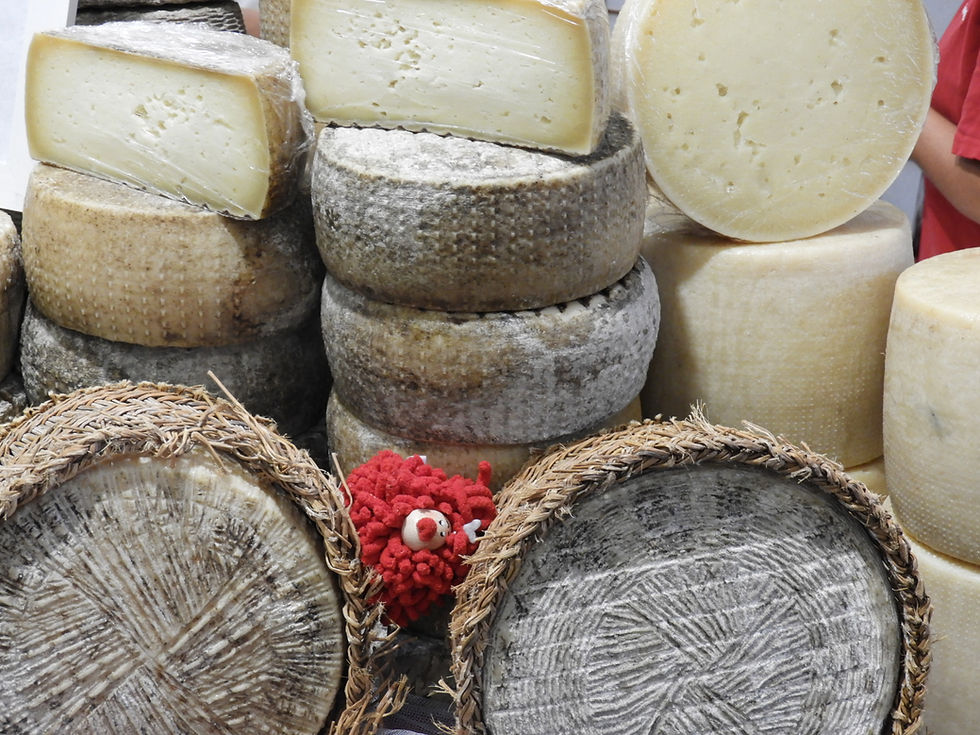Tuscany
- Aug 26
- 3 min read
Overview
Tuscany is arguably the most talked about and well-known region within Italy. It is often the first place that comes to mind when people plan a trip to the country. Although there are many other regions that offer what some would call the "true Italy," Tuscany remains a must-visit destination, especially for first-time visitors. Having explored most parts of Tuscany, I can affirm that it deserves a spot on any traveller’s list.

Geography and Location
As the fifth largest region in Italy, Tuscany is divided into ten provinces: Arezzo, Firenze, Grosseto, Livorno, Lucca, Massa Carrara, Pisa, Pistoia, Prato, and Siena. Located in Central Italy, Tuscany shares its borders with Emilia-Romagna to the north, Liguria to the north-west, the Tyrrhenian Sea to the west, Umbria and Marche to the east, and Lazio to the south-east.
Landscape and Accessibility
Tuscany is renowned for its picturesque rolling landscapes, featuring vineyards, olive groves, and cypress trees. Its beauty, rich history, art, and world-famous wines and cuisine make it one of Italy’s most popular tourist destinations. The iconic image of the Tuscan countryside is often the first that springs to mind when Italy is mentioned. Strategically located in the heart of the country, Tuscany boasts a modern and efficient network of roads, railways, ports, and airports, making travel to and from the region affordable, simple, and efficient.
Tourism and Experiences
Many travel itineraries include Tuscany, and efforts are made to incorporate off-the-beaten-track experiences to enhance the journey. Visitors are encouraged to explore the wide range of touring options available in the region.
Culinary Heritage
Tuscan cuisine is deeply rooted in local tradition and makes extensive use of fresh, regional ingredients. Soups are particularly popular, with ribollita standing out as a classic dish that varies across different parts of Tuscany. Tuscan pasta is known for its simplicity and rich flavours, with varieties such as Pannicelli, Pappardelle, Pici, Strapponi, Testarolo, and Tortelli Maremmani.
The most characteristic main course in Tuscany is Bistecca alla Fiorentina—a large steak made from Chianina cattle, a Tuscan breed. This dish pairs perfectly with the region’s robust red wines. Vegetables are plentiful and of excellent quality throughout the region. Tuscan bread is especially popular, and there are numerous books devoted to the different styles found within Tuscany.
Cheese also plays an important role in Tuscan gastronomy, with most varieties made from sheep’s milk. The best cheeses come from the rolling hills around Pienza, and sheep’s cheese may be referred to as "cacio" or "caciotta." Notably, Pecorino della Montagna Pistoiese is the only Slow Cheese presidio in the region.
Wine Culture
Tuscany is celebrated globally for its exceptional wines, many of which are recognised and exported around the world. The region’s vineyards produce a diverse array of grape varieties that contribute to the rich tapestry of Tuscan wine culture.

Among the most renowned wines are Chianti Classico, a red wine with deep historical roots, and Nobile di Montepulciano, known for its full-bodied character. White wine enthusiasts can enjoy Vernaccia di San Gimignano, an esteemed varietal from the medieval town of San Gimignano. Other noteworthy wines include Bolgheri, famous for its complex blends, and Ansonica Costa dell’Argentario, a coastal white with a unique profile. Bianco di Pitigliano further adds to the variety of Tuscan whites.
Red wine lovers will appreciate Brunello di Montalcino and Rosso di Montalcino, both highly regarded for their quality and ageing potential. Tuscany also produces Vermentino, a crisp and refreshing white, and Vin Santo, a beloved dessert wine known for its rich sweetness and distinctive production process.
These grape varieties and their resulting wines are an integral part of Tuscany’s identity, celebrated locally and internationally for their quality and heritage.




Comments